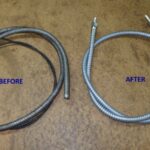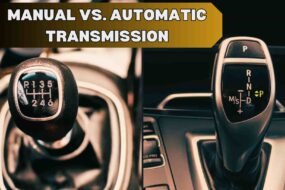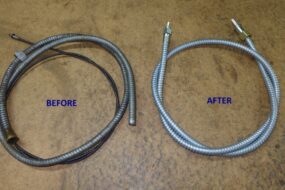If the test starter circuit indicates a starter motor fault, disconnect the battery and remove the engine from the car – complete the connection solenoid valve.
An inertia-type starter motor is fitted with a Bendix gear on the shaft from the armature. When the started switch is turned on, the motor rotates rapidly, the shaft turns, and the Bendix gear screws the pinion along a thread until it engages with they flywheel ring gear on the engine.
An electro-magnetic device is used for some unit operations. An iron core is placed in a coil. When the power is applied to the coil, the coil and the core are moved, so that it can exert a force connection on anything.
A pre-engaged type of starter motor incorporates a solenoid. When the started switch is turned on, the solenoid activates a lever which first moves the pinion along the shaft to engage with the flywheel ring gear and only then operates the switch that starts the motor turning.
If it is a pre-engaged type of motor.
To track faults for repairs, you almost always have to disassemble the motor, especially if the commutator and brush unit malfunction.
However, the inertia starter of the Bendix gear can be repaired without stripping the car from the car providing enough access.
Some shortcomings, such as severe wear of the commutator, can not be repaired, you have to buy a new or AC motor. However, you can re-wear bearings.
Damage to the motor windings is usually difficult to handle. Automotive electricians can cure short-circuiting of small field coils, but otherwise require installation of a new or alternating current motor.
A single motor may be worth repairing the failure, but if you find the cost of all the spare parts required for multiple fault checks. You will find it cheaper, faster, replace the motor and a switching unit.
Removing the starter motor
Hold the terminal-post but with a spanner while you unscrew the outer nut securing the lead from the battery.
Always disconnect the battery before removing the starter motor, which is usually clumsily lowered down on the engine. You may want to raise the axle station and work.
First disconnect the battery (ground terminal) to avoid accidental short circuit.
Remove the nut from the heavy lead battery connected to the starter. Be careful not to loosen nuts with an inertial electrical starter terminal. With the open-type locking nut wrench on the post.
Pre-engaged starter, heavy lead battery connected to the solenoid valve installed in the starting body. Be sure to pay attention to other causes before the electromagnetic disconnect.
Unscrew the bolts that hold the starter to the engine backplate.
Put two or three bolts on the back of the car engine.
Lift the motor and see any spacers. Collect and record their orders, so you can modify them correctly.
Reverse modified car removal process.
Testing a motor for short circuits
Use a test light equipped with alligator clips to make these tests. You want to remove the endplate from the motion.
From the excitation coil of the motor to the insulating sleeve. The rest of the packaging material will cause a short circuit.
If the following magnetic field coil test indicates a break, the rest is only a small one and an electrician can repair it.
If the following armature test shows a short circuit, adapt to a new or alternating current motor.
If there is a small solder motor, or any other signs, overheating, replace the motor.
To check the field coils, clip one test lamp lead to the field-coil terminal and the other lead to one of the battery terminals. Connect a lead to the other battery terminal and touch its free end to the motor body. If the lamp lights, there is a short circuit. To check the armature, connect a test lead between the shaft ans a battery terminal. Connect a test lamp lead to the secondary battery terminal and touch its other end to each commutator segment. If the lamps light, there is a short circuit.







